Welcome to another group project from the Photography Books and Theory Facebook group!
I absolutely love working on these projects, I find everyone’s response so inspiring and unique.
This time we were looking at an essay by John Berger in the book Understanding A Photograph in which Berger looks at the work of Paul Strand.
“In practical terms this means that he decides what he wants before he takes the picture, never plays with the accidental, works slowly, hardly ever crops a picture…His pictures are all remarkable for their intentionality…His camera is not free-roving, he chooses where to place it.”
So often we discuss the idea of capturing a moment, of fleeting glances and rapidly changing light and I must admit that my own style of photography is based on taking pictures of the details that I notice as I’m going about my life. So reading this essay stopped me in my tracks to question whether I have ever taken a photograph that was completely intentional.
You can see my contribution to this project at the top of the article. I don’t include mine up there because I think I’ve done a brilliant job, quite the contrary, when I look at my image I see a lack of imagination but this was taken one evening when I felt creatively starved and “I just had to do something” so I found a white box, a light, a black t-shirt and some “treasures” from the beach and shot a roll of film using macro tubes and a tripod. And this was the only example I came across from the past couple of years where I have been intentional in my subject matter, lighting, background and equipment.
Funnily enough though, I do have a few projects lined up for this year that incorporate intentionality so hopefully I will be balancing those scales.
I’ve kept all the contributors words with their images because it’s so fascinating to see the different interpretations of our challenge. Thank you to each of you for participating!
Steve Curzon
I have wanted to write a novel for a while. I have started a few times and got a title, and the idea is still slowly forming in my head… i.e. the environment, the plot, the general feel. I say slowly, this has had a gestation period of around 40 years. It will very probably never get written!
My ideas usually take the form of a visual representation, and an image has been slowly taking form in my head. Being a photographer, I had a mind to capture this scene which complemented the story – the front cover, if you will. As the idea gradually became more solid in the black and white synapses in my grey matter, I set out to acquire the image. Eventually, I knew exactly what I was looking for, and where I might find it. The title of the novel is “The Watcher on the Cut”.
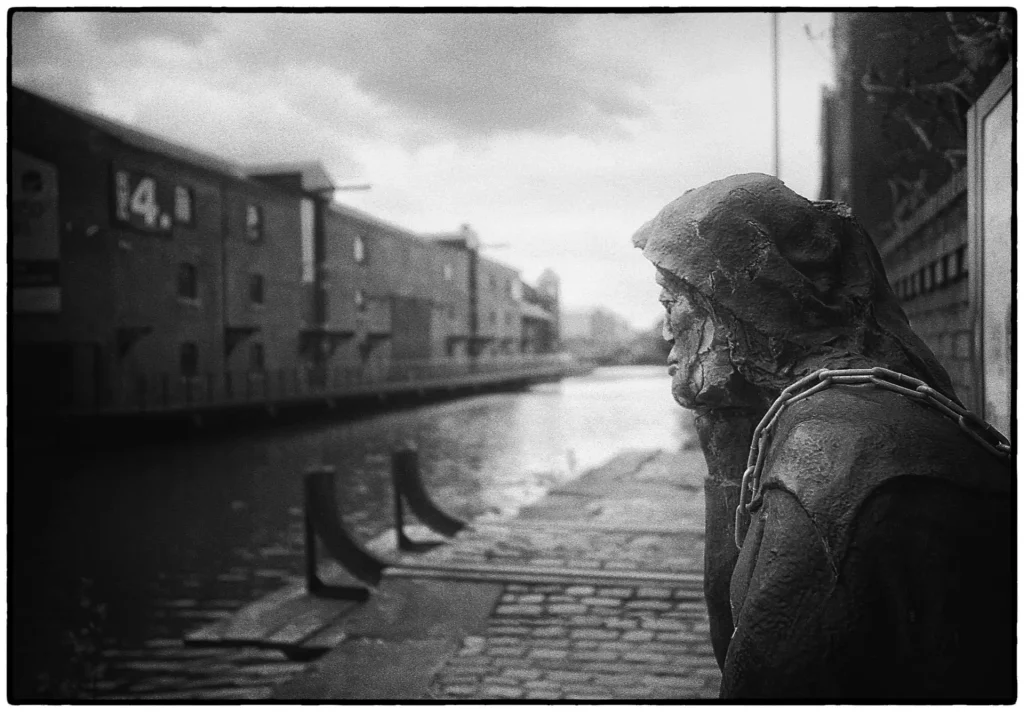
Ruediger Hartung
On the one hand, this picture is a homage to William T. Mortensen; on the other hand, it is meant to symbolise that a person often (actually always) actively has to decide between the light and dark side of life or -as here- rather passively lets it happen.
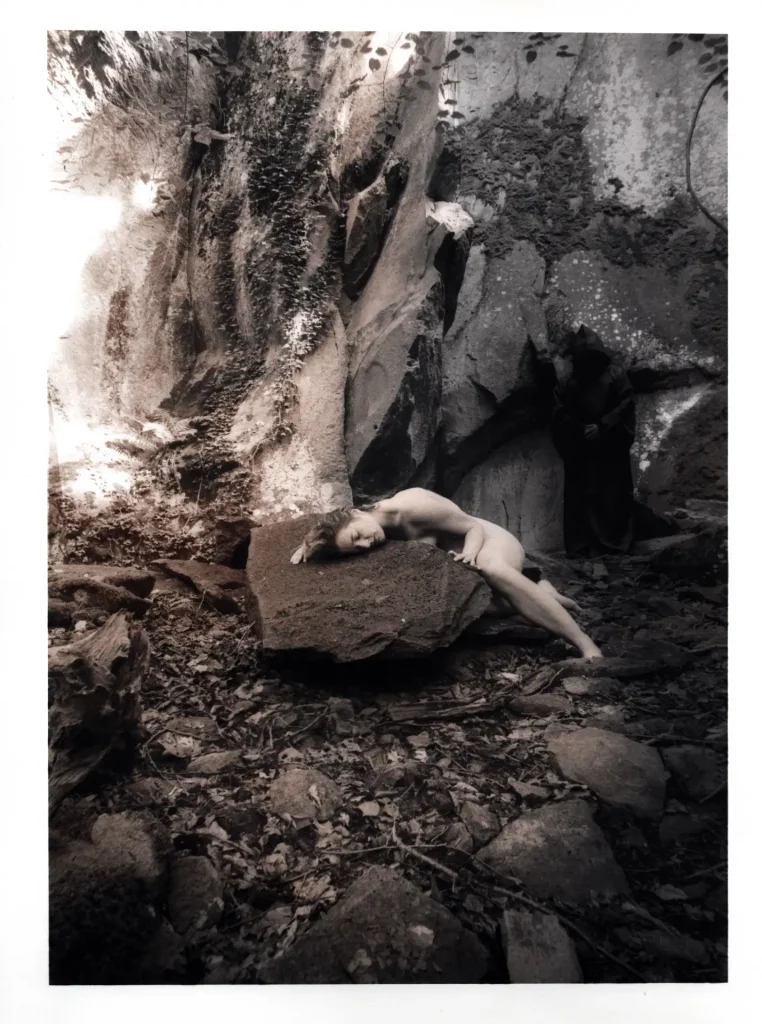
Canon EOS 3, Zeiss Distagon 4/18, Kentmere 100 @ ISO 200, tripod.
510-Pyro
Printed on Fomabrom Variant FB, Spur Cool Black developer
Selenium toning, Selective bleach, Sulphur toning, Iron blue toning.
Richard Hudson
Paul Strand’s portraits may or may not have had the meticulous “intentional” preparation that John Berger admires, although a bulky 8×10 view camera requires considerable intentionality. More important to Strand’s finest portraits, compared with his artful still lifes, is the crucial “decisive moment” when he decided to press his shutter. (Strand was doubtful of Henri Cartier-Bresson’s “decisive moment,” but he employed it nonetheless. “With me it’s a different sort of moment,” he said wryly, in a 1974 New Yorker Profile.)
The photographs “Mr. Bennett, Vermont” and “Young Boy, Gondeville, Charente, France” freeze extraordinary instants of subtle, inevitably fleeting emotion, and are riveting as a result. I am seldom able to marry the sensitivity and alertness with the reaction time needed to capture such moments, but had that happy accident while observing (very intentionally) two friends on a park bench in the town square in Cusco, Peru. The faint, knowing smile was gone in an instant, but lives on, full of life, in this image.
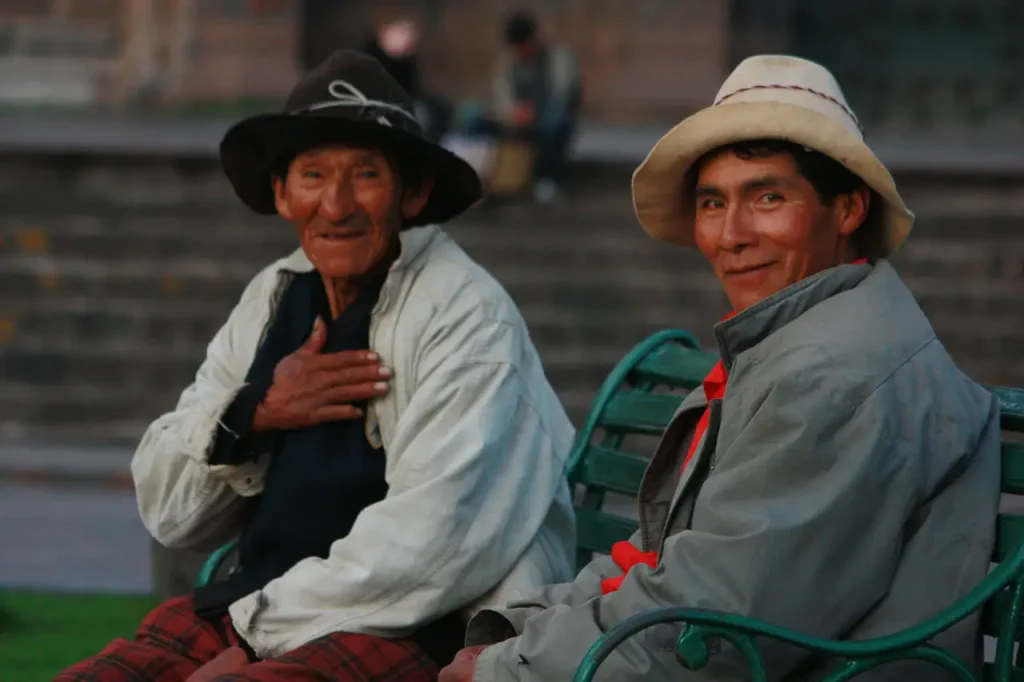
Philip Ourso
I can’t be too picky about my photo opportunities; the light won’t always be ideal when I have time and the Pacific Northwest imposes some seasonal constraints. Having said that, driving by this closed business countless times and noticing the shadows cast by the car ports, I knew I wanted to get back and capture the building before its inevitable change.
My first attempt yielded slightly overexposed frames with vignetting from an unnecessary hood. I’ve returned since but have had to switch my preferred 55mm for the 45mm due to a parked car for sale. Most recently, a camper has taken up residence in one of the car ports. I don’t necessarily find homelessness visually interesting and want to be sensitive to suffering, but part of my city’s life are campers so I expect I’ll be back to capture the business in a different light.

Justin Sharp
“Homage Pears and Bowls” references Paul Strand’s “Pears and Bowls” 1916. Observing Strand’s photograph, one sees that intentionality exists in the small details and how Strand answers the various questions that address each detail.
Where are the bowls and their various curves placed in the composition? How does the form of each bowl relate to the various lines and curves? What is the relationship of the pear to the bowls? What is the direction and quality of the light? Are the shadows hard or soft? How are these shadows placed? What is the relationship between the shadows and the form of the bowls? How do these elements combine to create a complex composition? How does the composition implicitly push beyond the boundaries of the photograph?
How Strand answers these questions (and many more) determines the intentionality and fulfillment of his photographic vision.
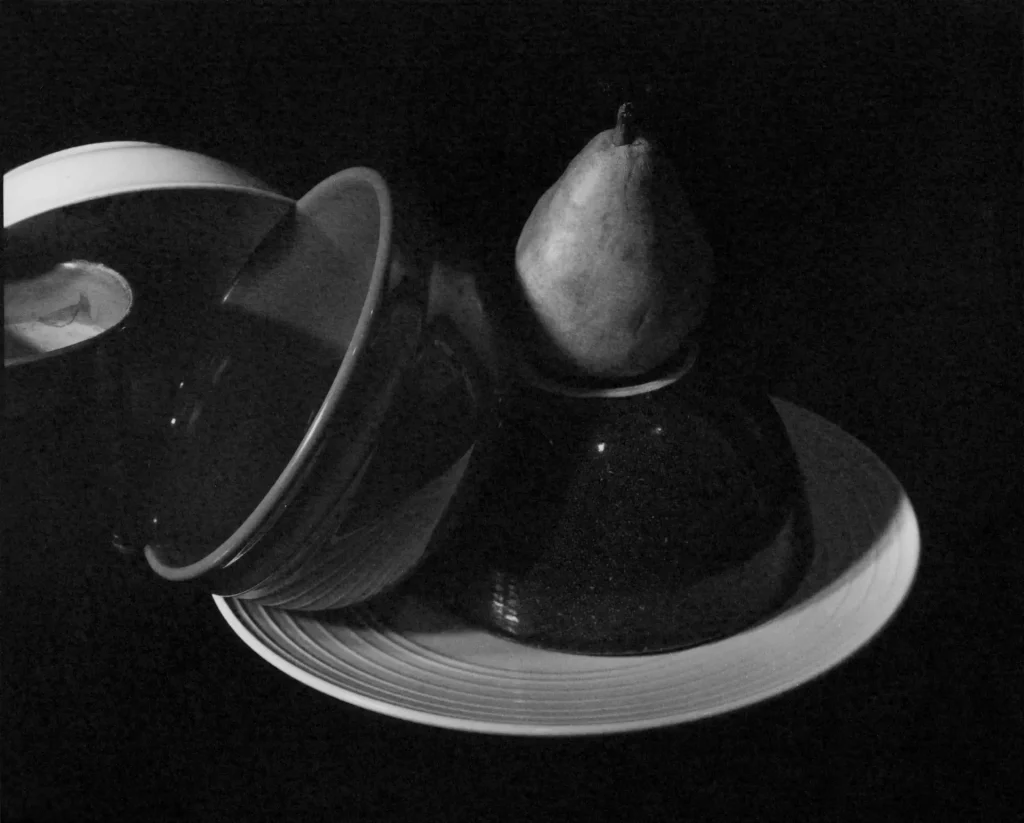
Medium: silver gelatin print
Dimensions: 8×10 inches
Johannes Tan
Lately I have been drawn into bridges. Since photography is about being at the right place at the right time, I usually maximize situational awareness by utilizing maps, travel guides and the weather forecast. Before exploring the Yaquina Bay Bridge, I concluded that a marina pier on the east side would be a strategic spot to capture the bridge’s silhouette against the sunset sky. The forecast of a huge Pacific storm triggered an adrenaline rush.
Thanks to clouds framing the bridge gracefully during the golden hour, the view was more jaw-dropping than my previsualization. A lone pedestrian who started to cross the bridge seemed to personify the fleeting moment – his minuscule silhouette contrasts the bridge’s grandeur. I tried zooming-in, but the wide-angle shot juxtaposes the contrasts better. I just had to wait for vehicle traffic to clear in order to capture the sense of space and serendipity.

Please feel free to come and join us in the Facebook group if you are interested in photography books, photography theory or you’d just like to get involved in one of these projects.
Share this post:
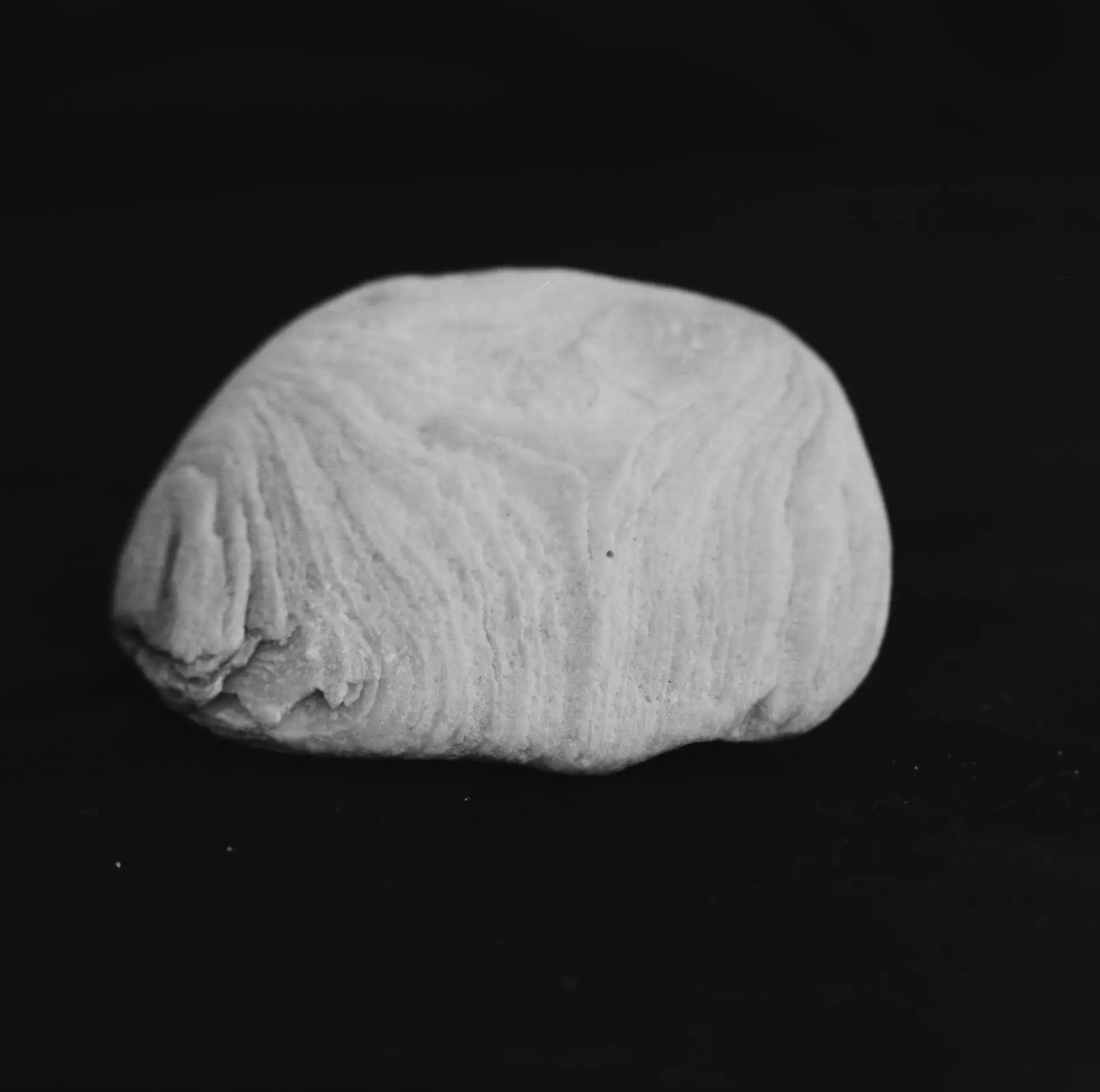








Comments
Bill Brown on Intentionality In Photography: A Group Project From The Photography Books and Theory Group
Comment posted: 04/02/2022
Philip Ahlquist on Intentionality In Photography: A Group Project From The Photography Books and Theory Group
Comment posted: 04/02/2022
It’s a very different type of photography from the sort usually featured on this site, but there’s a regular programme on YouTube called Photography Online (mostly digital but with regular analogue features). They have a recurring “Mission Possible” feature which showcases projects to get specific photos which can take years of planning. They started that mini series in February last year, I think, and have returned to it since. It’s good inspiration for what planning can achieve!
Alexander Seidler on Intentionality In Photography: A Group Project From The Photography Books and Theory Group
Comment posted: 05/02/2022
Billy Sanford on Intentionality In Photography: A Group Project From The Photography Books and Theory Group
Comment posted: 08/02/2022
Dean on Intentionality In Photography: A Group Project From The Photography Books and Theory Group
Comment posted: 11/05/2022
A cracking article, thank you to all involved.